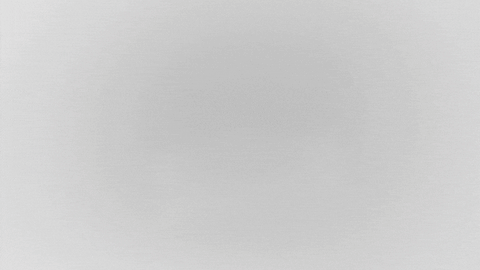by Charleen Montano June 2, 2022

Are you looking for a free image that’s ready to use?
Well, you’ve come to the right place.
While there are plenty of websites out there offering free images, we’ve done the hard work for you and rounded up our 9 favorite sites that offer public domain images.
So go ahead and get inspired—no credit card required!
Everyone knows the benefits of stock photography. It’s a cost-effective way to add variety to your marketing campaigns, and it can help you tell stories about your company or industry in a way that’s more engaging than a bland text-based ad.
But what if you’re on a budget?
If you’re looking for free images for your business, there are plenty of options out there—but how do you know which ones are going to work best for your needs? And how do you make sure that any photo you use is actually free of copyright?
We’ve rounded up nine of the best sites for finding high-quality, completely free images that you can use on your website, blog posts, or anywhere else!
Grab a snack, set tight, and read on:)
What are Public Domain Images?
Public domain images are the result of copyright expiration. When an artist’s work is copyrighted, it means that for a certain period of time (typically 70 years), the artist has control over how their work is reproduced and used by other people.

After this period of time has passed, though, anyone can use the image without asking permission from the artist—and since the image belongs to everyone, anyone can make copies and distribute them as they see fit.
Pros & Cons of Using Public Domain Images

Well, you might already think about it– using public domain images has its benefits, but cautions as well.
Here’s why:
Pros: Public Domain Images are a great way to save money on your projects. They can be used for all types of projects, including personal and commercial use. They’re also free to share, copy and modify!
Cons: It can limit your selection of images. There are fewer pictures in the Public Domain than there are on stock photo websites. So if you’re looking for something specific, you may not find it on a Public Domain site.
Pros: No attribution required.
Cons: Less control over how the images are used.
Pros: The images are in the public domain for a reason — usually because the copyright was abandoned by the owner or expired long enough ago that you’re safe using them.
Cons: Sometimes, it’s hard to find exactly what you want, so you may need to settle for second best (or third).
Pros: You can typically find a wide variety of images from which to choose, including scenic shots, people, animals, artwork, and more.
Cons: Some images were produced decades ago, so it can be challenging to find contemporary images.
Pros: You don’t need to worry about copyright.
Cons: The Quality of the image may be lacking. Some images look good in thumbnail but poor in high resolution.
Pros: The quality of the images is usually high.
Cons: Others might have already used the image, so you end up with something cliched and forgettable.
Tip: Public domain images are great if you can find an image that fits your need, but you should be careful about the license requirements. They aren’t for every situation but are a good option in some cases. These pros and cons will help you remember the key points about using public domain images in your blog.
Public Domain Images: 9 of the Best Source
If you ask any blogger what the most challenging part of their job is, chances are they’ll tell you it’s finding images. This is especially true when it comes to finding royalty-free images.
Sure, there are tons of stock image sites out there that claim to offer royalty-free photos and vectors, but these places usually charge a fee for their use. The following are the 9 websites for finding great public domain images:
WIKIMEDIA COMMONS
You can download images from Wikimedia Commons for free. All you need is an account and a credit card, which isn’t asking too much of you since it’s not like we’re asking for your firstborn or anything.
These images are completely free for commercial use, and you can use them however you want, as long as it’s not something illegal like selling drugs or hacking people’s bank accounts (which is called fraud, and it’s frowned upon).
You’re also allowed to change these images in any way that makes them look better—so if an older man has a bad haircut or his face looks funny, feel free to improve him!
PEXELS
Pexels is a stock photo website that offers free high-resolution photos under a CC0 license. Photos are free to use, modify and share. You can even use them for commercial purposes!
If you’re looking for some great images for your blog post or social media marketing campaign, Pexels is definitely worth checking out.
PIXABAY
Pixabay is a great place to find high-quality stock images that are free to use for commercial and personal projects. The website offers a large selection of photos, vector illustrations, and videos that are completely free. Pixabay also has a sister site called FlickR that offers an identical collection of images under a CC0 license.
UNSPLASH
Unsplash is a great resources for finding high-quality photos. Their collection includes over half a million images, many of which have been released and are no longer under the CC0 license. This means that they’re free to use without any attribution, making it easy to find great photos without worrying about legal issues.
Unsplash offers a huge variety of different types of photos–from nature scenes to people shots and even some architecture shots. There are also different genres within each group, so if you’re looking for something specific, you should be able to find it here!
STOCKVAULT
If you’re looking to find some stock photos without paying a dime, Stockvault is a pretty good option. The site has more than 100,000 images available for download, which means that you can find almost any photo you want (and then some).
If you’re not sure where to start your search, try clicking on the “categories” tab under the header section, and from there, you’ll have access to different categories of pictures including: abstracts; animals; food; landscapes; people; and technology.
You can narrow down your results by entering keywords in the search bar at the top of each page or by clicking on one of those aforementioned categories from this menu. If none of these options help narrow down your results enough for what you’re looking for, I recommend trying out another free stock photo site like Unsplash or Pixabay instead because their websites have even more visual content available for download than does Stockvault’s website itself!
LIBRESHOT
You could also use Libreshot, a free stock photo site that provides high-quality photos for use in your own projects. The catch is that you have to credit them in some way, but if you’re making something that doesn’t need to be commercialized (and most of us aren’t), then this shouldn’t be an issue.
The best part about LibreShot is that they offer many different formats, so you can choose which one works best for you. They have JPEGs, PNGs, GIFs, SVG, and even raw files like TIFFs and RAW files.
You can also search by category or keyword to find exactly what you’re looking for.
BURST BY SHOPIFY CONTRIBUTORS
Burst is a free stock photo website that was created by Shopify. Burst provides users with high-quality photos, graphics, and illustrations for commercial use. The site’s library is extensive and includes images of people, animals, landscapes, and cityscapes—and everything in between.
FREESTOCKS.ORG
One of the best public domain sources for commercial use is Free Stock Photos for Commercial Use. This website is run by author and photographer, Gratisography.
Gratisography offers high-quality images, all of which are free to use for commercial purposes. The photos are available in a variety of sizes and are optimized for use on websites and blogs.
The images can be downloaded in JPG format and will be free of watermarks or copyright notices.
Free Stock Photos for Commercial Use is an excellent resource for bloggers, eCommerce site owners, and other online business owners who need high-quality images for their website or blog.
STOCKSNAP.IO
StockSnap.io has over 1 million images licensed under CC0, which means you can use them for any purpose without attribution. There’s no signup required, so if you’re looking to get started quickly, this is your site.
The best thing about StockSnap.io is that it doesn’t require any watermarks or attribution (yay!) and has a wide variety of images to choose from—including photos of people in action and scenery like mountains, forests, and beaches (no model shoots here).
Tip: The public domain is a great resource for anyone who needs images without worrying about copyright infringement. The sites listed above are some of the best, but there are many other places you can go to get the perfect picture.
This list should serve as an introduction to public domain images and how they can be used in your creative projects.
Related FAQS
- WHY SHOULD I USE PUBLIC DOMAIN IMAGES?
Because you can use them for anything.
These images are free to use, so there’s no need to worry about paying to use them. You can use these images in any way, shape, or form: commercially; as part of a project; as part of your business; and in any format or medium (for example, if you want to download an image and make it into a postcard).
- HOW CAN I ENSURE THAT PUBLIC DOMAIN IMAGES ARE TRULY FREE?
For your own peace of mind, there is only one way to ensure your public domain image is truly free. You will need to read the terms of use and make sure that they state that the image is indeed free for all uses. If you are looking for a particular type of public domain image—say, a photo of a flower for use in your project about nature—you can search for images by license type.
- WHERE SHOULD I LOOK FOR COPY INFORMATION OF A PHOTO?
The best place to look for copy information on a photo is a watermark. If the image has been created by someone, there will be some way to identify them. The name of the photographer should be there somewhere, as well as information about who owns the image. These can often be found in tiny print at the bottom or side of an image too.
The license will tell you how it can be used and how others are allowed to use it if they find your work or choose to share your work with others. It also tells you whether or not someone else owns that particular work and has certain rights over it (like copyright).
- ARE THERE ANY SOURCES OF FREE STOCK PHOTOS I SHOULD AVOID?
Yes! There are a lot of sites that claim to have free stock photos that you should avoid.
Any site that doesn’t have a license at all (free or not) is off-limits, so don’t use their images.
If the license isn’t free, don’t use the image unless it’s for non-commercial purposes.
If the license doesn’t allow commercial use, then you need to find another photo and/or change your plans.
It’s important to note here that there are many different kinds of “free” licenses out there for image usage and reuse—and some can be more restrictive than others in terms of how you can use them.
For example, if someone gives away their work for personal projects only or against certain conditions such as attribution requirements or not selling products with those images on them (even if it’s just on Etsy), those restrictions still apply even if there aren’t any additional fees involved when downloading the file from their website; so always check each provider carefully before using any kind of resource on them—especially if they’re promising something like “free public domain” which could be misleading due to various factors like hidden costs or limited time periods.
- WHO GRANTS PERMISSION FOR COMMERCIAL IMAGES IN THE PUBLIC DOMAIN?
When you find an image that you want to use, make sure to check the license for any restrictions. It’s also a good idea to double-check with the owner of the work to be on the safe side.
There are a few different types of licenses, such as:
Attribution – You must give credit where it is due when using these images. This is usually done through links or watermarks that reference the original source of your media. If someone else uses your image without attribution, they could be sued by both you and whoever owns rights over them (like a photographer).
Sharealike – This means that if someone else uses your image under this license, they must also share their work under similar terms as yourself—for example, if someone else uses one of your photos in their book about hiking across Antarctica (weird), then they’d have to make sure their book was available for free distribution online in its entirety too!
NoDerivatives – Prevents anyone else from redistributing or changing your content without first obtaining written consent from yourself and any other parties involved in creating said content (e.g., photographers hired by said parties). This type of license also makes sure that no commercial uses can happen without prior written consent from all parties involved in creating said content.
- SHOULD I USE ALL THE IMAGES IN MY CONTENT FROM THE SAME SITE?
Yes, you can use all the images in your content from the same site. Just make sure that each image is different enough from its neighbors to avoid a monotonous experience for your readers. Don’t use too many of them, or they’ll start to blend together and lose their impact. Don’t reuse any of these images in different articles either—it’s okay to recycle one photo across several pages if it’s descriptive rather than representative, but don’t go crazy with it!
And don’t forget: different sizes aren’t an alternative for using multiple images from different sources; they’re just small versions of one big picture!
- WHAT IS A CREATIVE COMMONS LICENSE?
You know how you like to give people permission to use your work? Creative Commons (CC) licenses are a way of doing that. CC is a non-profit organization that offers free, standardized licensing options for creative work. The most popular license is CC BY, which means the creator of an image or text can grant permission for others to reuse their work under certain conditions (like attribution).
- CAN I USE PUBLIC DOMAIN IMAGES FOR ANY PURPOSE?
There are no rules or restrictions on what you can do with public domain images. You can use them in any content, for any purpose, and for as long as you want to. This includes commercial use (for instance, if you are creating a t-shirt design), personal use (if you want to print out your own wall art), and educational use (such as showing an image of the pyramids in Egypt to students), and so on.
- WHAT’S THE DIFFERENCE BETWEEN CC0 AND THE PUBLIC DOMAIN?
CC0 is a tool to waive all copyrights, while public domain is a tool to waive all rights. This can be confusing! If you have the time and interest, this wiki page about public domain has some great info on what’s going on here.
- CAN I EDIT A PUBLIC DOMAIN IMAGE AND CLAIM THE COPYRIGHTS ON IT?
You can absolutely edit public domain images, but they’ll remain in the public domain. When you create something new based on a preexisting work of art, what you make becomes part of that preexisting work’s history—it doesn’t become its own thing. However, if your edits are substantial enough (say, by adding text or changing the color scheme), then there is an argument to be made that the new version should be considered new work and not an extension of the original.
It’s also worth noting that there are some legal gray areas surrounding copyrights and how they extend to digital media: if you’re concerned about getting sued by someone claiming ownership over your edited image, it could be wise to consult a lawyer before publishing your creation online so as not to run afoul with any laws or regulations concerning intellectual property rights.
- HOW DO I KNOW IF AN IMAGE IS IN THE PUBLIC DOMAIN?
Here’s a simple rule to follow: If you’re not sure whether or not an image is in the public domain, it probably isn’t.
How do you know if an image is copyrighted? The most obvious reason is that the creator of the image has explicitly labeled it as such.
You’ll find this label on the photo itself (like “© 2013 Novelyn Garma”) or its metadata (the copyright holder for a digital file). But when dealing with old works that have been scanned from print sources, there may be no one who could have placed such a label–and even if there was, chances are they’re dead by now! So your next best bet is to look at any accompanying text about where and when the image was created. If it appears alongside other archival materials from that era (such as newspapers or magazines), then the odds are good. These items came from roughly similar time periods and were likely published at around the same time frame; therefore, their copyrights would have expired long ago anyway.
There are plenty of free stock photos available on the internet, but it’s important to know where you can and can’t use them.
You can use free public domain images for anything you want! You can use them on your website, blog posts, or even in your advertising materials. In fact, there are plenty of ways to use free public domain images that aren’t even mentioned above. If you have the resources and the time to make something unique to showcase your brand or product, why not do it?
With all of these different options available for free public domain images, why would anyone ever buy stock photos?
Conclusion
The beauty of public domain images is that they’re free to use, which means you can save a lot of time and money by using them instead of taking your own photos. But if you want to make sure your work doesn’t get flagged for copyright infringement, it helps to do some research on where these images come from before posting them on your website or blog.
More business articles: Strive Enterprise Blogs
YouTube Channel: Jose Silvera YouTube
Adios! See you…




